From the Chicago Reader (May 1, 1989). I can happily report that this expertly realized tour de force — a brilliant adaptation of what is essentially highly theatrical material, rehearsed and blocked to the nines — is now out on a Twilight Time Blu-Ray. For all its nervy desire to wear its sordidness, black comedy, and sheer roughness on its sleeve, which kept it from having a commercial success in the 70s and may still alienate some viewers now, this is basically a comedy about sexual vulnerability and shifting power plays between jaded Hollywood types with more bark than bite, and a surprisingly sweet aftertaste shining through all the harsh pseudo-toughness. — J.R.
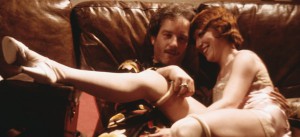
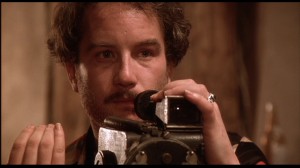
John Byrum’s controversial first feature, made in 1976, stars Richard Dreyfuss as a burned-out Hollywood genius director of the 20s, reduced in the 30s to making porn films in his own mansion. Wittily scripted and engagingly acted (by Dreyfuss, Jessica Harper, Veronica Cartwright, and Bob Hoskins), the film restricts all its action to a few hours in the director’s mansion, and is peppered liberally with inside movie references. Chances are you’ll either be bored stiff by the conceits or exhilarated; personally, I found it gripping throughout. (JR)
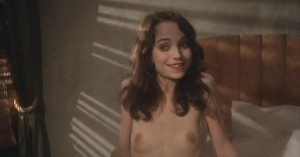
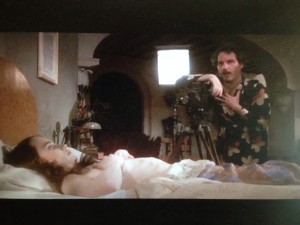 Read more
Read more
From the Chicago Reader (July 1, 1989). — J.R.
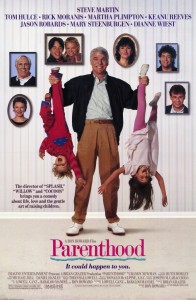
This movie has its share of laughs, but it’s also Ron Howard’s most personal film, and clearly his most ambitious — a multifaceted essay in fictional form about the diverse snares of child rearing. The movie tries for so many things in so many different registers — there are a number of fantasy interludes and raunchy gags along with an overflowing cast of characters (including Steve Martin, Tom Hulce, Rick Moranis, Martha Plimpton, Keanu Reeves, Jason Robards, Mary Steenburgen, and Dianne Wiest) — that the results are often unwieldy, but they’re certainly heartfelt: Howard’s grown-up sentimentality is the perfect antidote to the infantilism of Spielberg and Lucas and their disciples. The film never shies away from real problems, and the complex mix of comedy and seriousness in its treatment of the pitfalls of parenthood steadily grows in feeling and power. The movie may wind up being as messy as it argues that family life is, but it commands admiration and respect. The screenplay is by Lowell Ganz and Babaloo Mandel, based on a story that they wrote with Howard (1989). (JR)
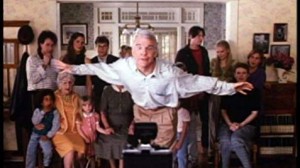 Read more
Read more
From the Chicago Reader (July 1, 1989). — J.R.
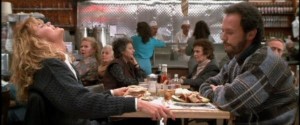
Fans of Billy Crystal’s amphibian qualities may be amused, but the rest of us have to contend with a slavish Woody Allen imitation in this New York comedy scripted by Nora Ephron and directed by Rob Reiner (1989). Everything from the background music to the jogging dialogue strains to create the atmosphere of an Annie Hall or a Manhattan, with Meg Ryan in the Diane Keaton part, Carrie Fisher and Bruno Kirby as the best friends/other couple, and half a dozen elderly New York couples periodically discoursing cutely about how they met. The title couple meet on a drive from the University of Chicago to Manhattan in 1977, and the movie charts their gradual and grudging bonding up to the present. Very slickly and glibly put together, with a sharp eye for yuppie decor and accoutrements; even Woody’s habitual, fanciful vision of an all-white New York is respected. 95 min. (JR)
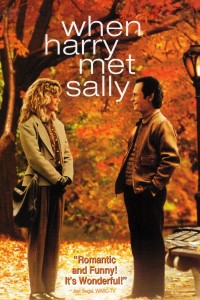 Read more
Read more

Because everything that we call news qualifies in some ways as propaganda that seeks to entertain as well as engage us, what we’re usually seeking is entertaining propaganda. From this standpoint, one of the most watchable and entertaining things I’ve seen lately is Travel Ban: Make America Laugh Again, a lively documentary about Middle Eastern standup comedians in the U.S. It’s every bit as funny and as lively as Bill Maher’s Real Time, and it’s well worth an hour and a half of anyone’s time. [10/14/2018]
https://www.youtube.com/watch?v=WnT1sKFu7XM
 Read more
Read more
From the Chicago Reader (May 1, 1989). — J.R.
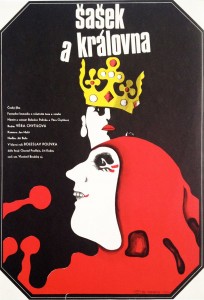
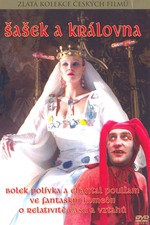
Since the 1960s, when she did brilliant, radical work (Something Different, Daisies, Fruit of Paradise) that arguably made her the most inventive living Czech filmmaker, Vera Chytilova has had a checkered, uneven career. This is in part because, unlike such compatriots as Passer and Forman, she chose to remain in her country, where her work has ranged from bouncy sitcom (The Apple Game) to fairly unabashed state propaganda (Prague) to more ambitious fare (Prefab Story). This feature — adapted by her and Bolislav Polivka from a comic stage piece he wrote, and starring Polivka (a gifted mime) and his real-life wife Chantal Poulainova — is probably Chytilova’s best since the 60s. A quixotic custodian of a castle (Polivka) serves as a guide to a German tourist (Jiri Kodet) and his French fiancee (Poulainova); he imagines himself as a medieval court jester, with Poulainova as queen, and the film switches back and forth between the real characters and their fantasy counterparts. As eclectic and as aggressive a stylist as Charles Mingus, Chytilova employs wide-angle lenses, dizzying camera movements, and restless editing; as in Daisies, her fascination with power and gender roles projects a dangerous, Dionysian sexuality, and the trilingual dialogue spoken by the three leads adds complexity to the proceedings. Read more
According to Google Analytics, 81.8% of the 4,052 visitors to jonathanrosenbaum.net over the past week, who paid 6,035 visits to this site, were new visitors, and only 18.2% were returning visitors. Why is this the case?I have no idea. These visitors came from 139 countries, and I’m almost equally puzzled by the fact that most of them by far (almost 40% of the total) are between 25 and 34 years old, less than half my own age, and male (about 70%)–at least among the 32% that Google Analytics apparently knows about. The relevant charts showing this information are below. [10/12/2019]




Read more
From the Chicago Reader (January 1, 1996). My capsule here doesn’t really do justice to this masterpiece, one of Bergman’s absolute achievements. — J.R.
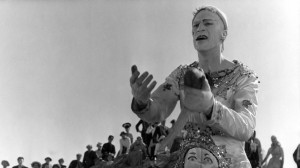
A major early feature by Ingmar Bergman, also known as The Naked Night (though the Swedish title apparently means The Clown’s Night). This 1953 film is perhaps the most German expressionist of Bergman’s 50s works, as redolent of sexual cruelty and angst as Variety and The Blue Angel, but no less impressive for all that. The aging owner of a small traveling circus who left his wife for a young performer in his troupe tries to regain his lost family. Visually splendid, but you may find the masochistic plot pretty unpleasant. With Ake Gronberg and Harriet Andersson. In Swedish with subtitles. 92 min. (JR)
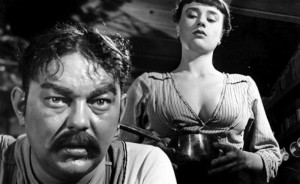 Read more
Read more
From the Chicago Reader (April 1, 1996). — J.R.
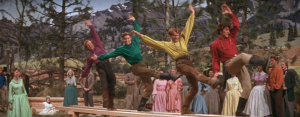
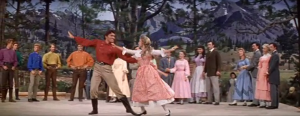
A profoundly sexist and eminently hummable 1954 CinemaScope musical — supposedly set in the great outdoors, but mainly filmed on soundstages — with some terrific athletic Michael Kidd choreography and some better-than-average direction by Stanley Donen. Based on a story by Stephen Vincent Benet (who took the plot from the rape of the Sabine women), it concerns six fur-trapping brothers who go to town to find wives after big brother Howard Keel marries Jane Powell; they wind up kidnapping them. A fascinating glimpse at the kind of patriarchal rape fantasies that were considered cute and good-natured at the time, performed to the music of Johnny Mercer and Gene DePaul. With Russ Tamblyn, Virginia Gibson, and Tommy Rall. 103 min. (JR)
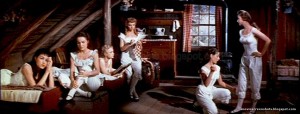
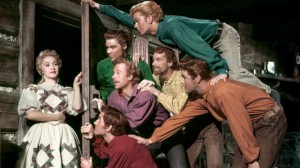 Read more
Read more
















